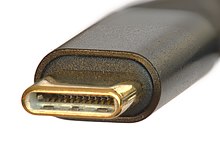USB-C is a 24-pin USB connector system with a rotationally symmetrical connector, now an industry-standard cable for transmitting both data and power on one single cable. The USB-C connector was developed by the USB Implementers Forum (USB-IF), the group of companies that has developed, certified, and shepherded the USB standard over the years. The USB-IF counts more than 700 companies in its membership, among them Apple, Dell, HP, Intel, Microsoft, and Samsung.

This broad acceptance by the big companies are important, because it’s part of why USB-C has been so widely accepted by PC manufacturers. Contrast this with the earlier Apple-developed Lightning and MagSafe connectors, which had limited acceptance beyond Apple products, and became obsolete thanks in no small part to USB-C.
Perhaps the most useful protocol that a USB-C port can support is Thunderbolt 3, or the emerging Thunderbolt 4. Either one adds support for up to 40Gbps of throughput, alongside reduced power consumption and the ability to move as much as 100 watts of power over the interface.

A USB-C port with support for Thunderbolt 3 or 4 means that a single cable is all you need to push power and transfer a large amount of information (up to and including video data for two 60Hz 4K displays) to and from even a complex device like a computer, something many laptop manufacturers have been quick to take advantage of. Some models of Apple’s MacBook Pro boast four Thunderbolt 3 connectors, which is as many as we’ve seen to date, and it gives you more expansion potential than you ever had with earlier versions of USB.
Now, like with DisplayPort over USB-C, not every USB-C port you see necessarily has Thunderbolt 3 or 4 support. Check a device’s spec sheet or documentation for the Thunderbolt details to be sure. Some devices may have more than one USB-C port, with only some supporting a Thunderbolt spec.
